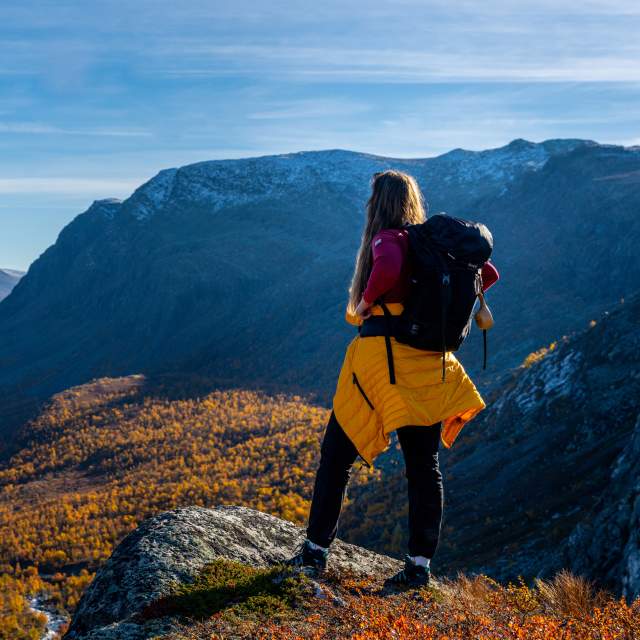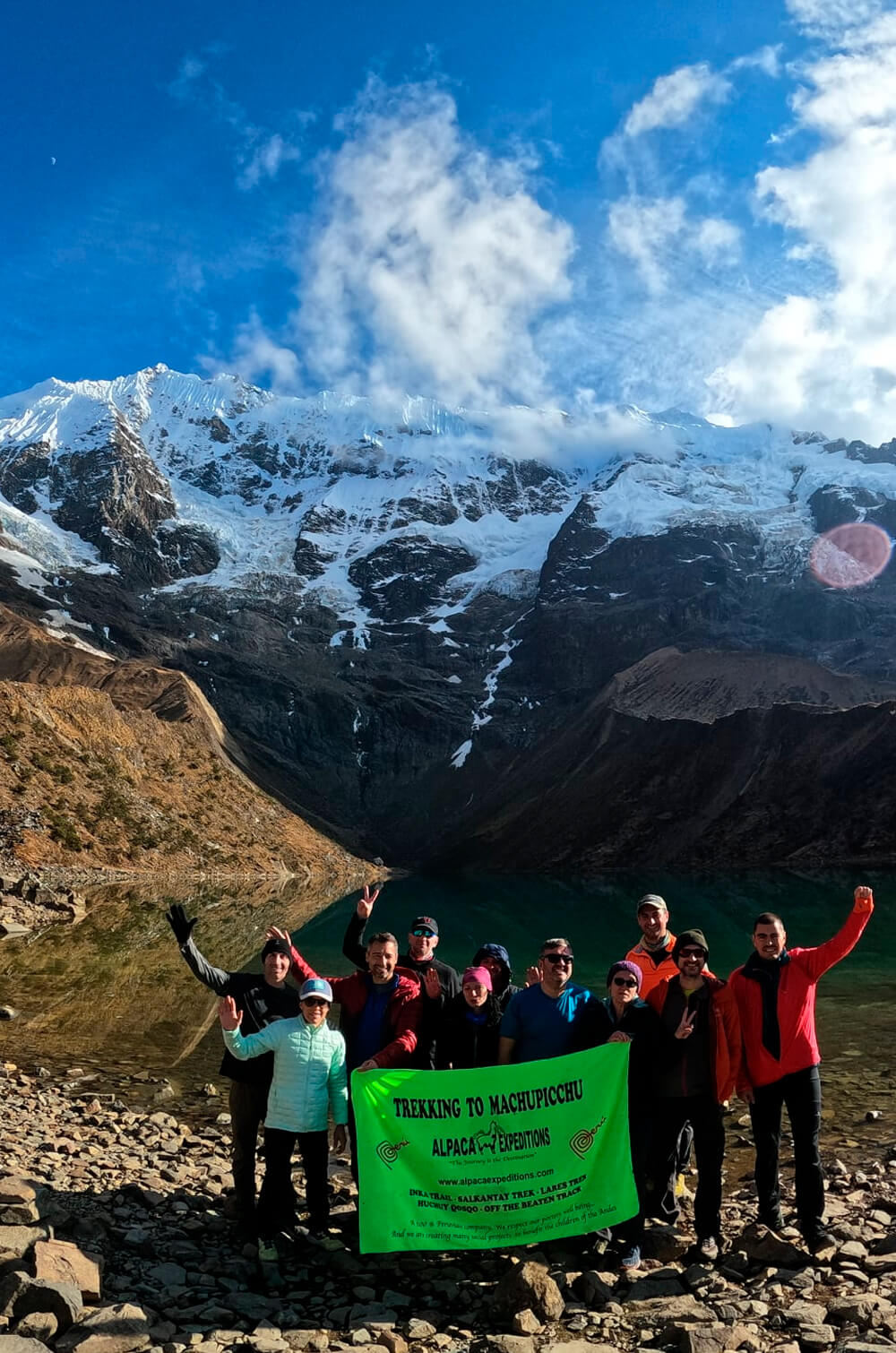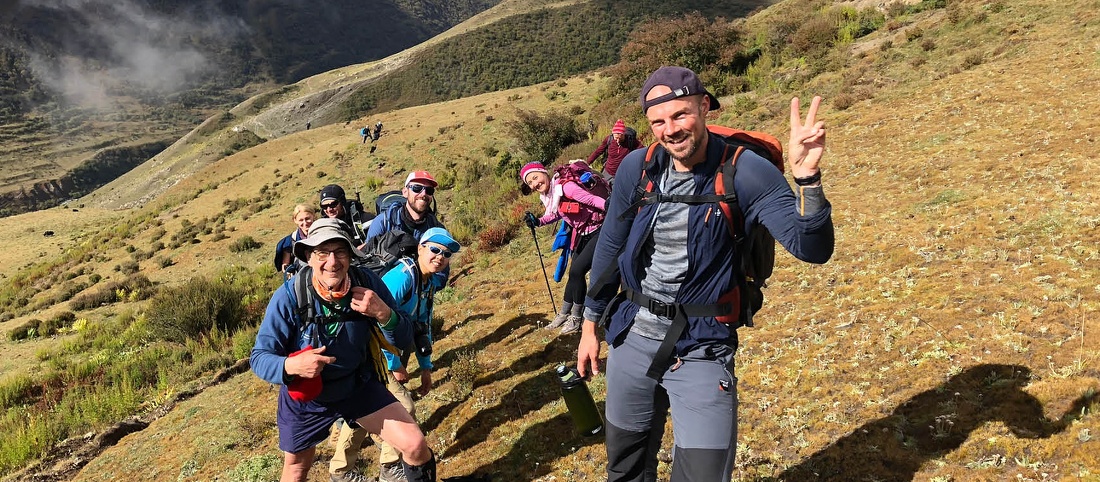To hike with a toddler, choose a family-friendly trail and pack essential items like snacks, water, sunscreen, and extra clothing. Encourage the toddler to explore nature with breaks for rest and play along the way.
Hiking with a toddler is a wonderful way to introduce them to the outdoors and foster a love for nature from a young age. However, it can also present unique challenges and require careful planning to ensure a safe and enjoyable experience for both the child and the adults.
By following some simple tips and guidelines, you can make your hiking adventure with a toddler a fun and memorable one. This article will provide you with practical advice and suggestions on how to prepare for and execute a successful hike with your little one in tow.

Choosing The Right Hiking Trail
Choosing the right hiking trail when embarking on a trek with your toddler is crucial to ensure an enjoyable and safe adventure for the whole family.
Considerations For Toddlers
- Short Distances to cater to their little legs.
- Minimal Elevation Gain for a manageable climb.
- Shaded Areas to protect from the sun.
- Smooth Trails to prevent tripping hazards.
Family-friendly Features
- Kid-Friendly Attractions along the trail.
- Picnic Areas for snack breaks with your toddler.
- Restrooms or facilities for diaper changes.
- Clear Signage to avoid getting lost.
Essential Gear For Toddlers
Equipping your toddler with the right gear for hiking is crucial for a safe and enjoyable outdoor experience. Essentials include a comfortable child carrier, sturdy hiking shoes, protective clothing, snacks, and water. Additionally, bring along a first aid kit and sun protection for added safety.
Essential Gear for Toddlers Comfortable Carriers ____________________ Comfortable carriers are a must for hiking with toddlers to ensure safety and ease. Sun Protection and Hydration ____________________ Proper sun protection ensures your toddler stays safe from harmful UV rays. Include hats, sunglasses, and sunscreen in your gear. Hydrate your toddler regularly on hikes with a kid-friendly water bottle or sippy cup. Remember to take breaks in shady spots during your hike. Prepare for emergencies with a first aid kit, complete with toddler-specific supplies like band-aids and child-safe medications. Choose appropriate footwear for your toddler to prevent discomfort and injuries during the hike.Planning For Hike Success
Planning for a successful hike with a toddler requires careful consideration of their needs and schedule. By taking proactive steps to accommodate your little one, you can ensure an enjoyable outdoor adventure for the whole family. Here are some essential tips to help you plan for a successful hike with your toddler.
Schedule Around Naptime
When planning your hiking trip, schedule it around your toddler’s naptime. Plan to start your hike right after a nap, as a well-rested toddler will be more cooperative and enjoy the experience. Make sure to choose a route that allows for breaks and easy access to resting spots in case your toddler needs a quick nap during the hike.
Prepare Snacks And Distractions
Be sure to pack a variety of snacks that are easy to eat on the go, such as cut-up fruits, crackers, or trail mix. Additionally, bring along a few distractions like small toys or books to keep your toddler engaged and entertained during rest stops or more challenging parts of the hike.

Credit: www.visitnorway.com
Safety On The Trail
When it comes to hiking with a toddler, safety should always be the top priority. As a parent, it is natural to be concerned about the potential risks and challenges that may arise on the trail. However, with proper preparation and knowledge, you can ensure a safe and enjoyable hiking experience for both you and your little one. In this guide, we will explore important safety measures to keep in mind while hiking with a toddler, including first aid kit essentials and rules for wildlife encounters.
First Aid Kit Essentials
Having a well-stocked first aid kit is essential when hiking with a toddler. Accidents can happen, and it’s best to be prepared for any unexpected bumps, scrapes, or insect bites that may occur along the trail. Here are some must-have items to include in your toddler’s first aid kit:
- Adhesive bandages in various sizes for covering cuts and blisters
- Gauze pads and adhesive tape for larger wounds
- Antibiotic ointment to prevent infection
- Tweezers for removing splinters or ticks
- Benadryl or antihistamine for allergic reactions
- Sunscreen to protect against harmful UV rays
- Instant cold packs for reducing swelling
Rules For Wildlife Encounters
Encountering wildlife can be an exciting and memorable experience while hiking. However, it is important to remember that wild animals are unpredictable, and caution should always be exercised. Here are some rules to follow when encountering wildlife:
- Keep a safe distance: Maintain a respectful distance from any wildlife you encounter. This not only ensures your safety but also protects the animals from unnecessary stress.
- Do not feed the animals: Feeding wildlife can disrupt their natural feeding patterns and behavior. It can also attract pests and predators to the area, posing a threat to both humans and animals.
- Observe from a distance: Use binoculars or zoom lenses to observe wildlife up close without disturbing their natural habitat. This allows for a more intimate experience while keeping a safe distance.
- Stay on marked trails: Venturing off the designated trail can disturb wildlife habitats and increase the risk of encounters. Stick to the established paths to minimize your impact on the environment.
- Do not approach or touch: It is important to remember that wild animals are not pets. Avoid approaching or attempting to pet them, as this can be dangerous for both you and the animal.
By adhering to these guidelines, you can ensure a safe and responsible approach to wildlife encounters while hiking with your toddler.
Making The Hike Fun For Toddlers
When it comes to hiking with a toddler, making the experience fun and engaging is key. Toddlers have endless curiosity and boundless energy, so it’s important to provide activities that will keep them entertained and excited throughout the hike. In this section, we will explore two exciting ways to make the hike fun for toddlers: Nature Scavenger Hunt and Interactive Exploration.
Nature Scavenger Hunt
A nature scavenger hunt is an excellent way to turn a simple hike into an exciting adventure for toddlers. This activity not only keeps them engaged but also encourages them to learn about different plants, animals, and natural elements. To organize a nature scavenger hunt, you can create a checklist with items like leaves of different shapes and colors, rocks of different sizes, or even specific types of flowers and insects.
During the hike, encourage your toddler to search for these items and tick them off the checklist as they are found. This interactive activity will make the hike more enjoyable for your little one, as they feel a sense of accomplishment with each discovery. Additionally, it promotes their observation skills and helps them develop a deeper appreciation for nature.
Interactive Exploration
Interactive exploration involves actively engaging your toddler’s senses during the hike, making it a memorable and fun experience. One way to do this is by encouraging them to touch and feel different textures they encounter along the trail. Let them explore the roughness of tree bark, the softness of moss, or the smoothness of rocks. This tactile experience not only enhances their sensory development but also sparks their curiosity.
Besides touch, toddlers are also naturally drawn to vibrant colors. Point out colorful flowers or birds along the way, and encourage your little one to identify and name them. This interactive activity not only develops their cognitive skills but also deepens their connection with nature.
Another fun way to engage toddlers during the hike is by encouraging them to listen to the sounds of nature. From the chirping of birds to the rustling of leaves, nature provides a symphony of sounds waiting to be discovered. Take short breaks during the hike to listen together, and help your toddler identify different sounds they hear. This not only sharpens their listening skills but also instills a sense of wonder and appreciation for the natural world.
In conclusion, making the hike fun and engaging for toddlers is all about creating interactive experiences that stimulate their senses and capture their imagination. Whether through a nature scavenger hunt or interactive exploration, these activities will not only make the hike more enjoyable for your little one but also foster a love for nature that will last a lifetime.

Credit: www.alpacaexpeditions.com

Credit: worldexpeditions.com
Frequently Asked Questions On How To Hike With A Toddler
How Can I Prepare My Toddler For Hiking?
To prepare your toddler for hiking, start by taking shorter walks to get them used to being outdoors. Gradually increase the distance and difficulty level. Pack essentials like snacks, water, sunscreen, and bug spray. Dress them in comfortable clothing and ensure they have sturdy shoes.
Encourage exploration and make it a fun learning experience for them.
What Are Some Essential Items To Pack For Hiking With A Toddler?
When hiking with a toddler, pack essentials like extra clothing, diapers, wipes, first aid kit, snacks, water, sunscreen, bug spray, a hat, and a small blanket. Also, bring a baby carrier or backpack for when they get tired. Make sure to pack lightweight items and keep the load minimal to avoid unnecessary strain on yourself.
How Do I Keep My Toddler Entertained During A Hike?
There are various ways to keep your toddler entertained during a hike. Encourage them to spot different wildlife, plants, or objects along the trail. Sing songs, play I-spy games, or bring small toys that they can easily carry. Take breaks to explore and let them lead the way at times.
Engaging them in nature will make the hike enjoyable for both of you.
Is It Safe To Hike With A Toddler?
Hiking with a toddler can be safe if you take necessary precautions. Choose trails that are suitable for children and are well-maintained. Avoid steep or rocky terrains. Ensure your toddler is well-rested, fed, and dressed appropriately. Stay alert, keep them within reach, and be prepared for any emergencies.
Always prioritize their safety and well-being.
Conclusion
Hiking with a toddler can be a rewarding and memorable experience for both parents and children. It’s a great way to bond, explore nature, and cultivate a love for the outdoors. By following the tips and advice in this guide, you can ensure a safe and enjoyable hiking adventure with your little one.